I’m ashamed to admit that I’ve fallen prey to my share of fitness gimmicks and failed gym habits. I’m always a sucker for trying again, however, and something about Ring Fit Adventure for the Nintendo Switch caught my eye.
The main thing that had me interested is was marketed as an RPG, which is probably my favorite video game genre — the idea that you’re building yourself up in-game with actions outside of it makes sense. This wasn’t enough to secure my money, though, mostly because I was worried about its execution.
This kind of game screams “potential for crap”, and I didn’t want to basically pay to introduce pay-to-win mechanics or something I wasn’t going to stick with into my collection. It doesn’t help that Ring Fit is a steep (well, for me) $100 CAD, because it comes with a physical tension ring accessory that hooks into your Switch’s Joy-Con.
After looking up the game’s details, I found that it was developed by Nintendo as a first-party game, and something about that really put my concerns at ease. I know this seems like blind fanboyism, but Nintendo seems really passionate about its forays into fitness, and while I missed the boat on 2007’s Wii Fit, I’ve heard a lot of legitimately good things about it.
Prime among those things is that while Wii Fit won’t replace a complete workout, it’s a good supplement to both get yourself active and in the habit. I think Nintendo took these things to heart with Ring Fit, because it seems like it has a bigger focus on scaling difficulty with the player, and providing them with exercises that have the potential to build functional strength.
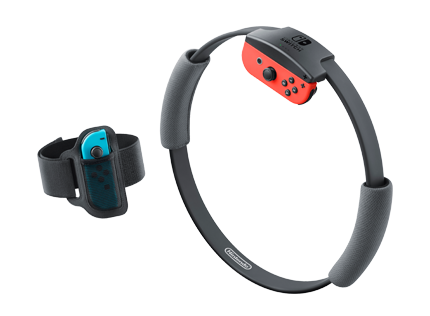
The player straps a Switch Joy-Con to their leg with the provided strap, and puts the other into the tension ring (called the Ring-Con). This means that game can track when you press in or pull out the ring, and where your leg is during its exercises.
It then gives you a couple different modes to play around in, such as targeted sets of exercise, or mini-games. However, what interested me most was the Adventure mode, which sets up a plot and a series of stages to save the world from a recurring boss, Dragaux.
To do that, the Ring-Con morphs into a character named Ring, who guides and encourages you through getting powers, traveling through levels, and fighting monsters. Movement and combat in the game are pretty varied: while you’re running in place to physically move through the worlds, you’ll also be using the ring or doing movements like squatting, knee-raises or ab crunches to get past obstacles.
When you run into monsters, you’re given a menu with different exercises that you perform to do damage. Each one has a base attack value, a range that it affects (from one enemy to five), and a color-coded group (arms, legs, abs and yoga).
The colors are important, because matching an exercise color to an enemy does more damage. This keeps combat from becoming “figure out the easiest exercise”, and also encourages a variety of skills. You eventually unlock new and stronger exercises, which can be a lot harder (damn you mountain-climbers…).
When I first heard about RFA, this is where I expected the depth to stop. However, Nintendo realized that people would need some extra hooks to get people coming back, and I think they really nailed progression in a way that’s engaging.
You have an Attack and Defense stat, and completing encounters and stages levels you up. You have side-quests beyond just getting through the stages, which can reward you with materials and gold. You use that gold to buy materials to make smoothies, which give you bonuses to attack power, change the color of exercises (ie, red-colored arm exercises can be changed to blue, in order to affect blue enemies), or add utility like extra drops and experience. You can also buy shoes, bottoms and tops which give you set bonuses, or supplement your stats.
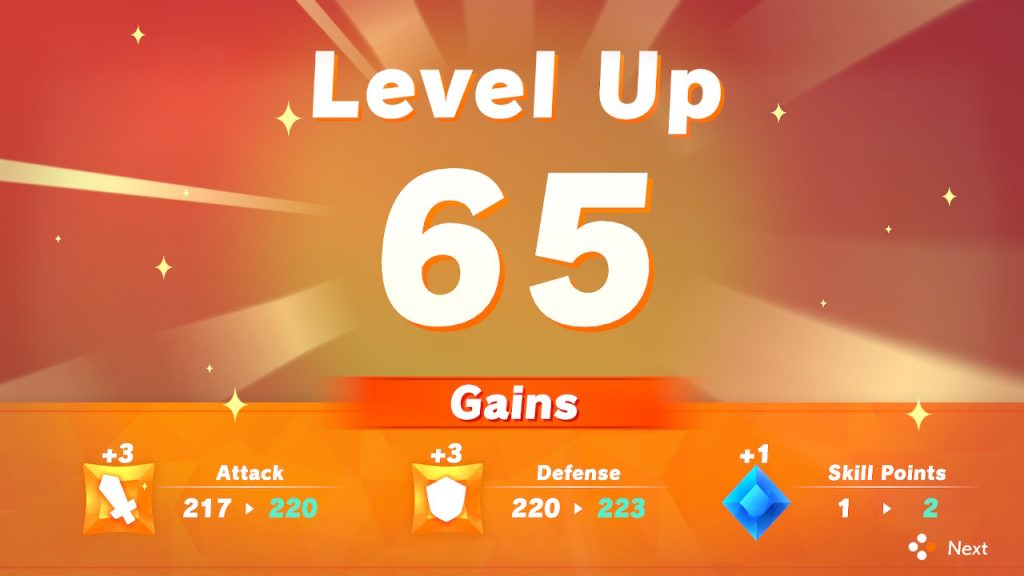
Just when I thought that this was enough, I hit level 50 (took me about 14 sessions) and the game opened up to add a skill tree, which gave me more slots for exercises, hearts on my life bar, and passive bonuses like random chances at perfect guards or extra turns. At 65, this opened up again to a bigger skill tree.
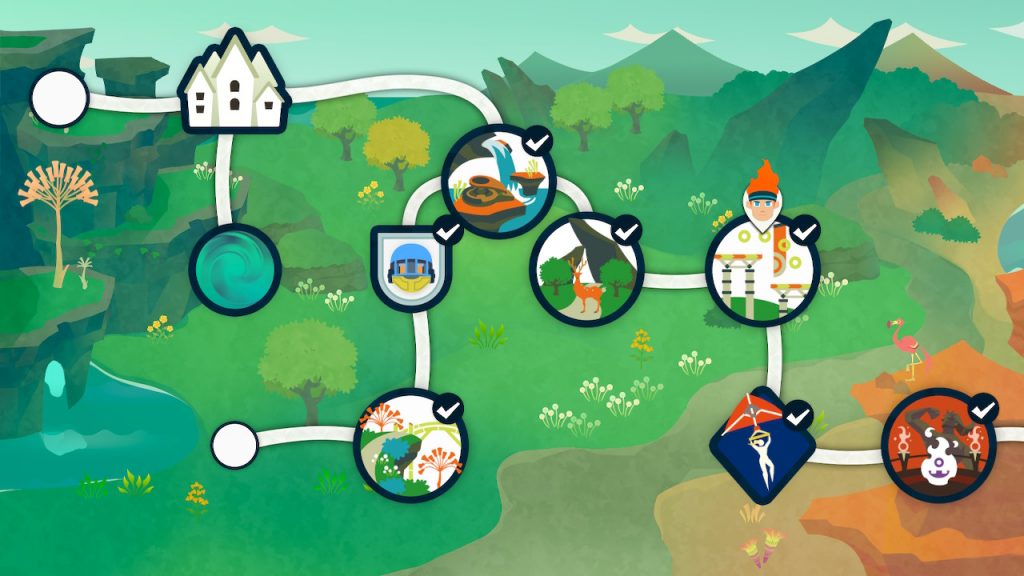
I’m less than half of the way through the game on World 10, and there’s apparently 23 worlds, each with their own mini-games, side-quests, material farming and recipes to unlock. Then the game gives you a new game+ on top of that, letting you start over with everything you’ve unlocked, and a second new game+ after that.
This content is on top of 30 levels of difficulty, to which the game prompts you each session to change to your liking. It also allows you to use your Ring-Con for presses and pulls while the game is off, storing reps to give you or friends an experience boost when you next log in. This “multi-task mode” is supposed to encourage you to do reps while watching TV, but I haven’t exactly used it much.
Lastly, I think it’s important to mention that the game also allows you to replace this running-in-place with squats or other accessibility-friendly options, especially if you live somewhere like an apartment, where the noise would carry through the floor.
Gameplay to match the premise
It’s very easy to come into writing all this as a giant shill while avoid the key questions: is it fun, and is it useful?
The short answer is yes to both.
The longer answer is that if you’re already fit, you’re likely not going to be able to replace your gym or sports sessions with this game. If you’re a newbie (or well, a repeat beginner like me), you’re probably looking for something to hook you into fitness, and if RPG mechanics are what does it, you’ll find this a fun and rewarding experience.
I describe myself as pretty into RPGs because I like depth and customization, and while I wasn’t expecting something super nuts in terms of that here, I’m pleased with how much is offered. A simple Attack and Defense stat allows you to play along with tuning encounters, and there’s enough exercises that you can plan for tackling weaker enemies with area attacks while saving the solo targets for later (that is, if they don’t have some kind of effect, like healing their allies).
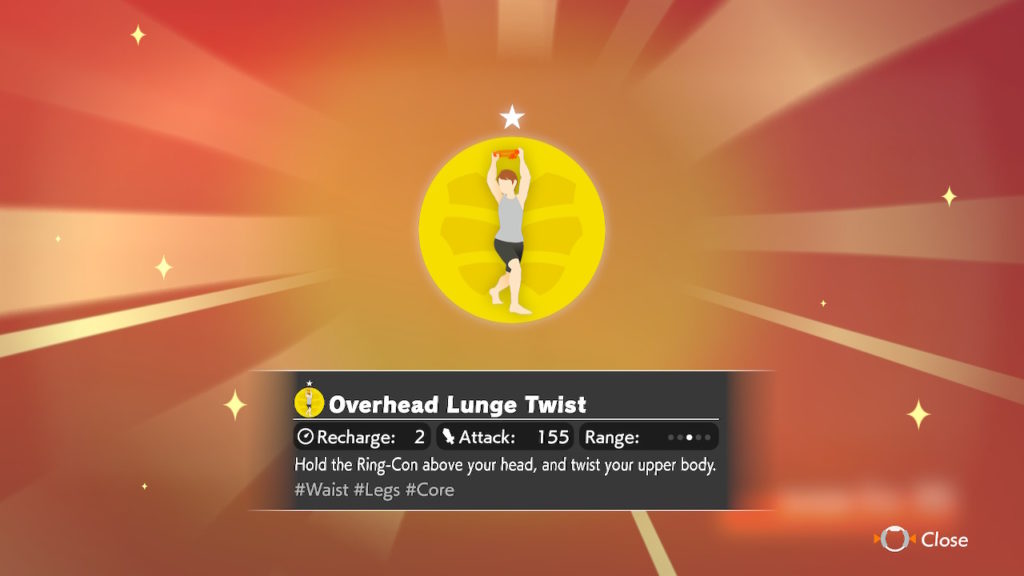
I also found myself really liking the world itself from an aesthetic perspective: it’s fun to go through courses. While each stage is taken from a limited tileset the music and the environments you’re traveling through are really pleasing to the senses. Sometimes it’s just fun going back through earlier stages to collect smoothie ingredients and things you didn’t quite get the first time; there are easter eggs, hidden paths, XP medallions (three per stage) and thankfully easier encounters, since the enemies don’t scale to your level.
My only real concern for long-term playing is that a tension ring has limitations that prevent it from building a large amount of strength. While friends of mine have explained how punishing the high difficulties are, it comes from repetitions and how long you’re holding certain poses (like planks), rather than something like adding more weight to a barbell. There’s only so far you can push in that ring before it reaches its tension limit.
But for the moment (and for where I am, fitness wise), this is okay. I still feel the engagement when I’m pressing in on the Ring-Con, though I’ve noticed that there are certain muscle groups (namely the biceps) that aren’t friendly to Ring Fit Adventure‘s possibilities.
Tracking calories
Picking up Ring Fit Adventure has been nice, mostly because I already have a system in place for tracking calories in my day-to-day life (a Fitbit) and adding them to a food tracking system (MyFitnessPal). This means when I play volleyball or RFA, it’ll measure my heart rate over time, estimate how many calories I burned, then add it to the total that I’m able to consume.
While Ring Fit Adventure does measure your heart rate using the Joy-Con’s infrared scanner after every stage, I find that the calories-burned calculation is really conservative, and only will count your actions during the stage towards your totals. Instead, my Fitbit is tracking a “workout” from the time I manually start and stop it, giving me a constant tracking through my entire session.

I’m not exactly sure which one to believe; while RFA will tell me that I’ve played for 30 minutes and burned 150 calories, my Fitbit will track an hour workout (the extra 30 min could be in menus in-between stages, or doing other mini-games and challenges) and say that I’ve burned 400.
I guess my point with all this is that if you’re trying to use the same system (tracking calories burned and diet), you’re likely going to need an outside solution like I have. The game also doesn’t do an amazing job of long-term tracking: you aren’t seeing graphs like how much you’re improving, and looking through previous days’ records are mostly just saying “you did X of this exercise” and how long your session was.
This is probably my only complaint with depth in the game; for some people, this kind of tracking means that they’re seeing motivation and improvement, and while Ring Fit Adventure will tailor some things based on your weight and height, it kind of forgets to ask you if you’re changing, rather than just saying “hey, you’ve done 200 squats total!”

A typical session’s final result card. 
A list of all the exercises I performed in a session (with overall totals in brackets)
This is fine, though. Currently Ring Fit is just part of my exercise routine that includes volleyball and actual gym trips; however, I’m finding that it’s much easier to get my ass away from the computer to play RFA in front of the TV instead of actually leaving my apartment (a bit pathetic, I know).
I guess that’s all that really counts, though: my therapist has said that 75% of the difficulty in changing healthy habits is finding something fun to do at the gym that’ll keep you going, and keep you scaling so you actually see results.
I’m happy with my purchase with Ring Fit Adventure, and I hope I’ll get to the point where I actually see those later modes and higher difficulty levels, mostly because I never really regret playing it. I hope if you’re looking for a gentle way to introduce more fitness into your life, you like it too.
You can pick up Ring Fit Adventure at your local game store (hopefully, as I had a hard time finding a physical copy because of demand) or on Amazon.
Note!
Starting in 2023, more of my writing will be on Substack, with only certain, personal posts making their was to this site. Consider subscribing to support my work.
Amazon links on this post may be affiliate links to help support Matt.
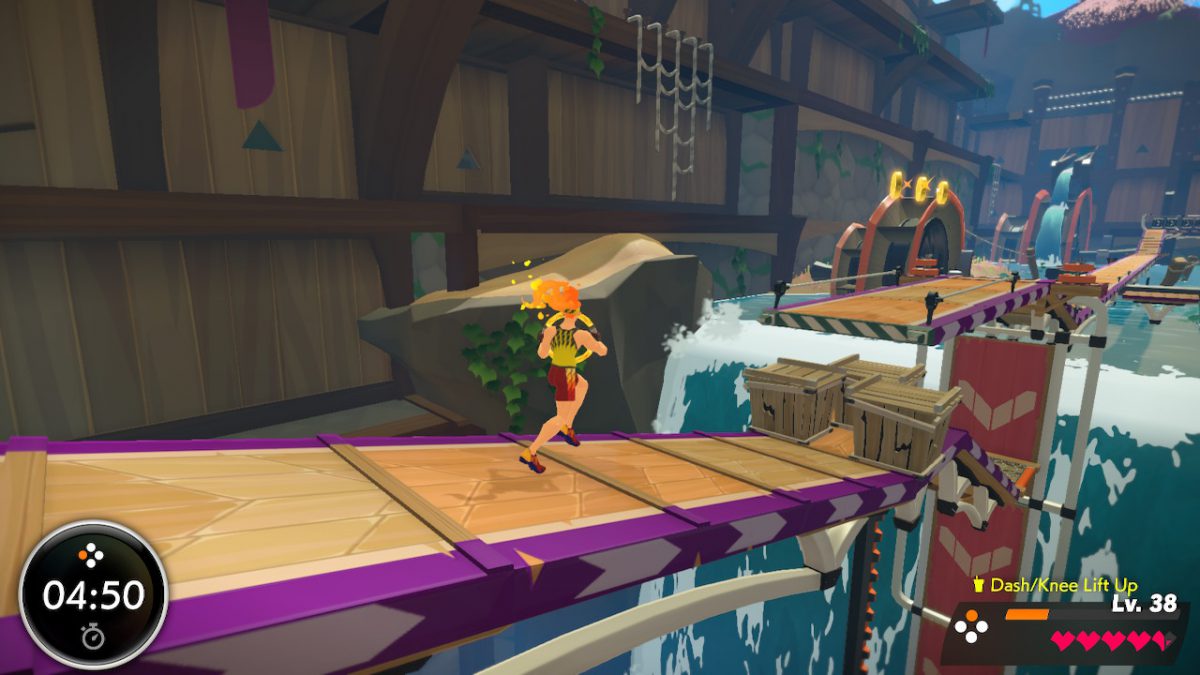
Leave a Reply